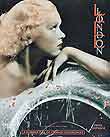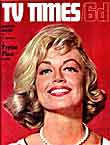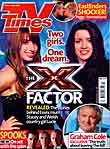Film, TV and radio magazines
Since the start of the 20th century, the fate of film, TV and radio magazines has been dictated by the development of entertainment technologies. The two world wars also affected the commercial strength of magazines in the UK:
- Theatre and silent movie titles evolved to cover the talkies
- Some magazines were weekly catalogues of films on show in cinemas.
- In the first world war, the British film industry was cut back and movie production from Hollywood began to dominate
- After the Great War, some film magazines were sold in cinemas as well as newsagents
- The Hollywood star system kicked in at this stage and American stars began to dominate the front covers of cinema magazines and some more general consumer titles
- The BBC launched the Radio Times in 1923 after newspapers refused to carry radio listings
- In 1936, the BBC broadcasts its first television programmes but this was brought to a halt because of the war
- The pagination of all magazines was limited in the second world war and it also put a block on the development of colour – red ink ran out in 1943!
- The years after the war saw a boom in film magazines with cinema chains such as Rank, Odeon and ABC, putting out their own magazines. Magazine publishers not only saw greater competition but also lost a distribution channel.
- BBC broadcasts began again in
- 1950: end of paper rationing for magazines
- Competition in the 1950s led to a more pin-up approach among the movie magazines – 'cheesecake' and 'beefcake' poses dominated.
- The advent of commercial television in 1955 increased competition, not only for cinemas, but also for magazine readers' time – and advertising revenue. From the mid-1950s several cinema titles began to cover TV and radio; later in the decade, several titles merged or closed
- Fans launched their own magazines based around cult series such as Doctor Who, Thunderbirds and The Avengers
- Commercial publishers jumped on the cult TV bandwagon with titles devoted to soaps and the most popular series
- Radio Times and TV Times dominated the listings sector until forced to sell their copyright information to magazine publishers in the 1980s.
- In the 1980s, magazines were launched dedicated to video and these either fell by the wayside or evolved into DVD magazines
- All the big publishers launched TV listings magazines as cable and satellite stations boomed
- Listings became a staple of many weekly magazines, a trend led by celebrity weekly Heat, as well as newspaper supplements
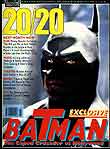 Issue 4 of the Time Out spin-off 20/20 featured the first Batman film |
20/20 [closed]April 1989. Time Out. Launch issue: £1.50; 164 pp. Ed: Don AtyeoBat-man was on the cover of the fourth issue of this short-lived spin-off from Time Out (Sell-Out was another). Included a column by Julie Burchill Time Out profile |
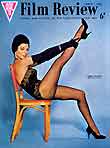 Joan Collins stretches a leg for the cover of ABC Film Review in March 1960. The picture is credited to 20th Century Fox |
ABC Film Review [closed]1950- Associated British Cinemas Ltd ABC Film Review was a monthly magazine sold only at the company's cinemas. It dropped the ABC to become Film Review in 1972. As Film Review it survived in print until 2008 with filmreviewonline.com as its website. |
The Box [closed]April/May 1997. Haymarket. Launch issue: £1 (£1.95), 132 pages. Editor: Paul SimpsonPaul Whitehouse on the cover |
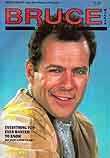 Bruce Willis on the cover of his own magazine |
Bruce Willis [closed]An example of a one-off magazine devoted to a star, in this case Bruce Willis. The strapline of this 1987 title is 'Bruce Willis – Just Moonlighting magazine', a reference to the spoof detective TV series Moonlighting in which he made his name with Cybill Shepherd |
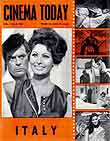 Cinema Today in October 1963 |
Cinema Today [closed] |
 1994 launch issue of Coronation Street magazine with wedding of ‘Reg’ and ‘Maureen’ (Ken Morley and Sherrie Hewson) on the cover |
Coronation Street [closed]Newsstand Publications, Oldham, and Granada Television. Launch issue: 1994; 36pp; £1.75; editors: Brian Clarke and Daran Little (writer on Coronation Street from 2000 until 2006).The official magazine of Granada TV's long-running soap Coronation Street was launched as the series celebrated 33 years of broadcasting. Introduction by Carolyn Reynolds, executive producer. One of the editors, Daran Little, went on to become a writer on Coronation Street (2000-06). The main feature is about the wedding of ‘Reg’ and ‘Maureen’ (Ken Morley and Sherrie Hewson), which Reynolds says was watched by 22m people (more than a third of the population of the UK). Another article gave a history of the corner shop and the people who ran it |
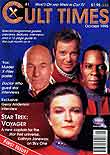 Four Star Trek captains on the first cover of Cult Times |
Cult Times [closed]Visual Imagination Ltd, London. Launch issue: October 1995; £1.95; 48pp; ed: Jan Vincent-Rudzki.Sci-fi listings for the month ahead. Adverts for back copies of Star Trek poster magazine and TV Zone. This issue carried double-page posters for X-Files actor Fox Mulder DPS poster and The Prisoner |
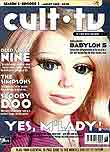 Cult TV put Lady Penelope from Thunderbirds on its first cover |
Cult TV [closed]October. Future; £2.75; 84 pages. Editor: Karen Levell |
 Doctor Who Weekly with Tom Baker and a Dalek on the first issue cover |
Doctor Who Weekly
|
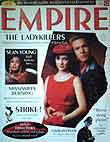 Empire's first issue in 1989 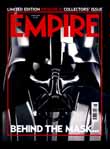 Empire's 'breathing' Darth Vader issue Empire's 'breathing' Darth Vader issue
|
EmpireEmap / Bauer, London. Jun/Jul 1989- |
 Catherine Schell as Maya in science fiction TV series Space: 1999 on cover of Gerry Anderson fanzine FAB (issue 42) |
FAB [closed]On of several Gerry Anderson fanzines based around series such as Thunderbirds, Supercar, Stingray, Fireball XL5, UFO, Space 1999, Terrahawks and Space Precinct |
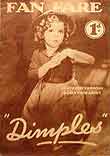 Fan Fare from 1936 (1d) with Shirley Temple on the cover in 'Dimples' |
Fan Fare [closed]Fan Fare Shirley Temple Dimples |
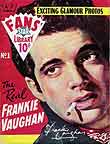 Fans' Star Library first issue focused on Frankie Vaughan |
Fans' Star Library [closed]AP. 18 August 1958-?. First issue: 10d Liverpool-born singer Frankie Vaughan was the subject of the first Fans' Star Library. Later issues covered stars such as Brigitte Bardot, giving their lifee story with glamour photos |
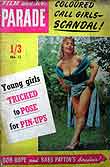 Film and TV Parade traded on pin-ups and scandal. This is issue 12 from 1956 |
Film and TV Parade [closed]Film and TV Parade called itself 'Britain's leading glamour fortnightly' and followed in the tradition of magazines using pin-ups from the stage and theatre that went back to the start of the 20th century when printing technology made it economic to publish photographs |
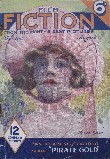 The first, and only, issue of Film Fiction |
Film Fiction [closed]Odhams Press, monthly, August 1921 (only one issue) |
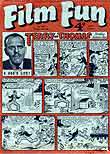 Film Fun with front page strip based on Terry Thomas (15 February 1958) |
Film Fun [closed]Comic with front cover strip based around actor Terry Thomas |
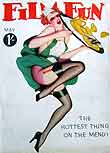 Film Fun in May 1937 (British edition) |
Film Fun [closed]Despite its title, Film Fun had little to do with films. It was a US pin-up magazine that was also printed in the UK. |
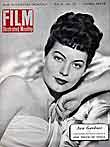 Film Illustrated Monthly : vol 4 no 12. Ava Gardner is on the cover in 'One Touch of Venus' |
Film Illustrated Monthly [closed]
|
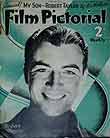 The lead story in this 13 February 1937 issue of Film Pictorial was: 'Special! My son – Robert Taylor by his mother' |
Film Pictorial [closed]
|
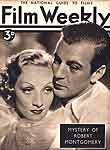 Film Weekly cover from 1 August 1936 shows Marlene Dietrich with Gary Cooper Greta Garbo in Desire |
Film Weekly [closed]
|
 Films and Filming from April 1966 with Monica Vitti on the cover as Modesty Blaise, based on the comic strip series first published in the London Evening Standard in 1963 |
Films and Filming [closed]
|
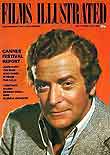 Films Illustrated cover from July 1978 Michael Caine hed |
Films Illustrated [closed]1971-1982. Monthly 'The magazine that loves movies' |
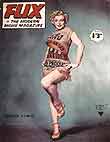 Flix issue 4 in the 1950s (1/3d) with a Marilyn Monroe cover |
Flix [closed]Flix Marilyn Monroe cover |
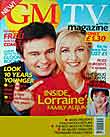 GMTV magazine |
GMTV [closed]GMTV magazine for the morning television programme |
Hot Dog [closed]July 2000. IFG (I Feel Good) / Highbury / SMD. Launch: £1.50 starter price. Hot Dog was the first launch for IFG, a company founded by Loaded launch editor James Brown. The first cover used spot varnish. Hot Dog aimed to be an irreverent riposte to mass-market film magazines such as Empire and Total Film. Its first ABC sales figure was 39,254, but this halved within a year and by the end of 2005 Hot Dog was selling just 13,659 copies a month. When IFG foundered, the title was bought by Highbury, which sold it on to SMD, a start-up offshoot of adult magazine publisher Remnant Media. |
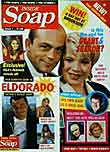 Inside Soap with Eastenders actor Ross Kemp on the cover |
Inside Soap [closed]
|
 Ikon mixed music, film and sport |
Ikon [closed]European Consumer Pubs, London. Monthly. September 1995-? Chris Roberts was editor of this title, which covered music, film and sport (99p; 132 pp). The first issue carried a plastic 'privilege card' on the cover for discounts on events and products. The main cover line was: 'I'm not homosexual and I'm not heterosexual. I'm...sexual' with Paul Morley interviewing the 'wild one' of REM. Other articles covered: Belly; Alan Shearer; Kevin Costner; Martin Amis; Blur's football focus; Eddie Irvine; Sandra Bullock; Black Grape; Batman; Christina Ricci; and Soul II Soul. |
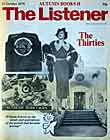 The Listener magazine with a cover feature about goods from the Thirties (25 October 1979) |
The Listener [closed]Founded in 1929 and closed in 1991. Weekly review of radio programmes with transcripts of the best broadcasts. The Listener Crossword, first published on 2 April 1930, lives on in The Times, where it has been published every Saturday since no. 3090 on 23 March 1991. In 1941, Benjamin Britten read an article, ‘George Crabbe: the Poet and the Man’ by E.M. Forster in the May issue of The Listener. This inspired an interest for him in the work of George Crabbe, a fellow East Anglian born in the Suffolk seaside town of Aldeburgh in 1754, and led to the writing of the opera Peter Grimes, which had its first production in June 1945 at London’s Sadler's Wells theatre |
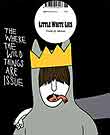 Little White Lies: Where the Wild Things Are issue |
Little White LiesLittle White Lies comes out six times a year and glories in what’s happening in the film world. The Nov/Dec 2009 issue was devoted to Where the Wild Things Are from cult director Spike Jones (Being John Malkovitch). The cover was designed to sit alongside the publisher's sister title Huck, an extreme sports magazine. |
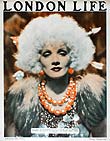 Marlene Dietrich in the film 'Blonde Venus' (London Life, 20 Jan 1934)
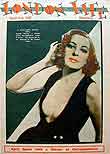 Martha Bianco appeared in the revue 'Folies D'Amour' at the London Casino (London Life, 3 April 1937). This issue carried a 3-page souvenir of Pinewood film 'London Melody' with Anna Neagle and Italian actor Tullio Carminati |
London Life [closed]London Life described itself as 'a magazine of fiction, films and future fashion'. In the 1920s-1940s, its pages were dominated by images of the stars of stage and screen, with covers relying on publicity stills from the British and Hollywood studios as well as London theatre.In the 1930s, a typical issue of the weekly London Life ran to 28 pages with colour font and back covers and an eight-page centre section of pin-ups printed gravure. It cost 6d. The covers often took black and white publicity stills and either printed them with a second colour to give a 'duotone' effect or coloured parts of the image in to give the impression of a colour image. As an example, a black and white photo of Marlene Dietrich in the film 'Blonde Venus' was coloured and printed for the cover of the 20 Jan 1934 issue. An image of Anglo-German actress Lilian Harvey was on the back cover; Esther Ralston in 'To the Last Man' was on the the inside front cover; the inside back cover was of two scantily-clad women from the show 'Paris Fantaisie' at the Price of Wales' Theatre. Seven other pages were taken up with pin-ups of movie or theatre actresses, including one of Mae West, who, with her 'saucy invitation' to 'Come up and see me some time' had swept London off its feet. In the 1937 edition opposite, Martha Bianco has had her hair and lips coloured using the orange/gold spot colour in the London Life masthead. This colour was similar to that used by Picturegoer for its covers. This image is a cut-out, with the dark triangle behind Bianco added for dramatic effect – a common trick for London Life covers. Another feature of the covers was that every masthead was unique. Today, this would be regarded as breaking a prime rule of branding and recognition but the title was published from 1922 to 1960, a very long run for a British magazine, although issues after the war adopted a pocket format and lacked the ritz of earlier copies. |
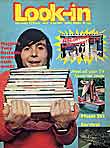 Look-in first issue (9 January 1971) with Tony Bastable, one of the presenters of ITV's Blue Peter rival Magpie, on the cover |
Look-in [closed]Look-in was launched by ITV's publishing arm in 1971. Tony Bastable, a presenter on Magpie was on the cover of the 'junior TV Times'. |
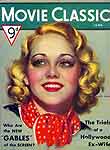 Movie Classic: from June 1932 (9d) |
Movie Classic [closed]Movie Classic 1932 |
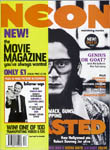 Neon: launched in a box full of goodies with Select |
Neon [closed]Emap, London. January 1997 The first issue, a sample, came boxed with an issue of music monthly Select. As well as the two magazines, the box held:
However, Neon was not mentioned on the box! Emap profile |
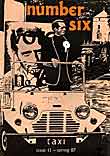 Number Six: fanzine for the 1960s TV series The Prisoner with Patrick McGoohan |
Number Six [closed]Number Six fanzine for The Prisoner TV series |
Observer Film Monthly [closed]Observer newspaper, London. Free supplement; 68pp. Observer profile |
 Photoplay in March 1956 with pin-up Sabrina on the cover |
Photoplay [closed]Argus Press / Illustrated Publications. MonthlyPhotoplay was a UK version of a US title founded in 1911. It was launched in 1950. The Photoplay cover here from March 1956 showing the model Sabrina is typical of the pin-up strategy of many film magazines in the mid 1950s. The struggle for the magazine to cope with the changing viewing habits and new entertainment technologies after 1960 is shown in the changing emphasis in the magazine's title:
Photoplay appears to have closed that year. |
| |
Photoplay Film MonthlySee Photoplay |
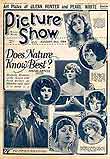 Picture Show weekly on 30 August 1924 (2d) 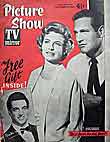 Picture Show took over TV Mirror (March 28 1959). Paul Newman and Joanne Woodward shown in 'Rally Round the Flag, Boys!', plus a signed Frankie Vaughan photo 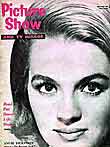 One of the last issues (26 March 1960) with a close-up of Angie Dickinson in 'The Bramble Bush' |
Picture Show [closed]Amalgamated Press. 1919-1960Picture Show was a weekly that came out each Monday. It took over TV Mirror in 1959 and listed its contents as 'gossip, reviews, pictures, news', but was itself merged into Film Pictorial in 1960. David Reed in The Popular Magazine describes Picture Show: 'Now, these tired publications [Answers, Tit-Bits and Pearson's Weekly] were being pressed by a new breed of specialist weekly. Amalgamated Press's own Picture Show, with its mindless puffs of long forgotten nonentities of the silent screen, was selling 442,819 a week during 1920 ... The cover of Picture Show always featured the head or head and shoulders of a current player of the silver screen. But, for every Mary Pickford, Owen Moore, Mary Miles Minter or Chaplin, there were dozens of people who have left no noticeable cinematic record outside these pages and those of similar publications. Most of the text seemed to have been produced by the publicity departments of the studios, although fictional serials were also used. In fact, the whole publication must have been very cheap to produce, for the profusely used illustrations would also have been free publicity material. Occasionally, the readers were given a little extra when a four-page gravure scetion was inserted into the centre of an edition that featured more portraits and publicity stills.' |
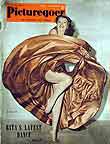 Picturegoer in what was probably its heyday, 1952. The orange-gold tint to the masthead and images was a common feature of its cover designs in this period  Picturegoer last issue (23 April 1960) |
Picturegoer1913-1960. Odhams Press, Long Acre, WC2. Every ThursdayPicturegoer developed from being a catalogue of films showing in cinemas before the Great War to a pin-up weekly in the 1950s, when it styled itself as ‘The national film weekly’. February 1958 saw it take over Disc Parade, as young people – the main cinema goers – paid more attention to pop and rock music. In April 1960, however, Picturegoer was was 'transformed' by Odhams into Date, 'The great new colour weekly for smart young women!' This ran film and disc reviews alongside short stories and fashion. |
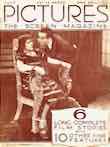 Pictures magazine cover (July 1922) showing Douglas Fairbanks tying up Marguerite De La Motte in The Nut
Pictures magazine cover (July 1922) showing Douglas Fairbanks tying up Marguerite De La Motte in The Nut
|
PicturesOdhams Press, Long Acre, WC2. 64pp. 1s Pictures – 'the screen magazine' was a monthly based around retelling the plots of films and the stories behind their making. It was copiously illustrated with stills from the films, always in the form of cut-outs. For example, the July 1922 carried:
The issue also carried adverts for other Odhams titles, including Pan, London Mail, The 20 Story Magazine, Everywoman’s Weekly and Picturegoer, 'the picture theatre newspaper'. Also, the magazine sold film postcards and promoted Odhams Fourpenny popular novels. It was distributed in the British colonies and the US and sold in WH Smith bookshops in Brussels, Ostend and Paris |
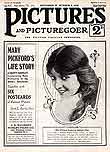 Pictures and Picturegoer put the young Hollywood silent film actress Lila Lee 'Cuddles' on the cover of its 28 September 1918 issue (2d) |
Pictures and PicturegoerPictures and Picturegoer, 'the picture theatre newspaper' |
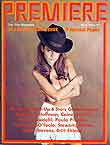 Premiere issue 5 in 1970 |
Premiere [closed] |
Radio TimesLaunched in September 1923. In 1955, Radio Times claimed 'the largest sale of any weekly magazine in the world' with 8,832,579 copies a week, making it the biggest-selling UK magazine until overtaken by Reader's Digest in 1993. In 1960, it was selling about 7m copies compared with almost 4m copies for TV Times. Sales have fallen steadily since, particularly after the two rivals lost their listings monopoly in the late 1980s and several competing titles were launched and many weeklies began to carry TV listings pages. However, Radio Times still claims to be the UK's most profitable magazine. The ABC sales figure for Radio Times in Jan-Jul 2009 was 966,098 copies a week, compared with 1,335,894 for Bauer's TV Choice and 1,272,586 for IPC's What's on TV.
|
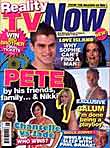 Reality TV Now – spin-off from IPC's celebrity weekly Now (summer 2006) |
Reality TV Now[closed]Reality TV Now – spin-off from IPC's celebrity weekly Now (summer 2006) |
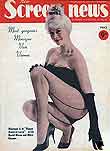 Monique van Vooren on cover of Screen News (14 October 1960) |
Screen News [closed]The 1960 cover of Screen News shown here features Monique van Vooren who appeared in Happy Anniversary with David Niven and Mitzi Gaynor |
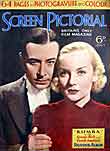 Screen Pictorial (July 1935) in photogravure and colou |
Screen Pictorial [closed]The July 1935 issue of Screen Pictorial here described itself as 'Britain's only film magazine'. The cover promoted '64 pages in photogravure and colour' and a 'souvenir album' for 'Rumba' with George Raft and Carole Lombard |
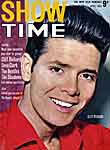 Cliff Richard on the cover of Showtime in April 1964 (9d) 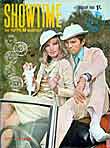 Monica Vitti and Terence Stamp in a still from Modesty Blaise - Showtime in January 1966 |
ShowtimeShowtime – 'The new film monthly' featured full colour portraits of pop stars. Covers seemed to alternate between film and pop. The August 1965 issue called itself 'the top film monthly' with a cover image of John Lennon |
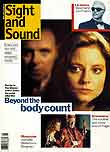 Sight and Sound launch issue from the BFI in 1991 featuring serial killer films and The Silence of the Lambs |
Sight and Sound [closed]May 1991-. British Film Institute. Launch issue: £2; 76 pages. Editor: Philip Dodd |
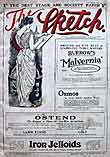 The Sketch July 1919 (1d) |
The SketchThe Sketch July 1919 – 'The best stage and society paper' |
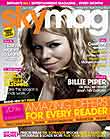 Customer magazine Sky Mag for subscribers to the satellite TV company with Billie Piper on the cover (September 2007) |
Sky MagCustomer magazine Sky Mag for subscribers to the satellite TV company. Launched by Redwood in the late 1980s; then published by John Brown Citrus; and then News International's magazine publishing arm |
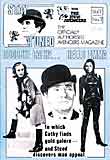 Stay Tuned to The Avengers fanzine showing Honor Blackman and Diana Rigg (the first two actresses who played Emma Peel) and Patrick McNee (John Steed) |
Stay Tuned to The Avengers [closed]Stay Tuned to the Avengers: one of several fanzines devoted to the TV series that began in the 1960s.Dead Duck Avengers fan website |
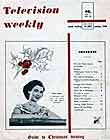 Television Weekly: week ending 24 December 1949 (issue 45) |
Television Weekly |
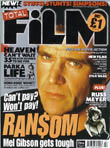 Mel Gibson on the first cover of Total Film in 1997 Mel Gibson on the first cover of Total Film in 1997 |
Total FilmFebruary 1997-. Future |
Total TV GuideSeptember 2003-. BauerTotal TV Guidedevotes 10 pages to each day's listings. This detail 'enhances the TV viewing experience for its readers and it guides the consumer to the best programmes out of a minefield of thousands of programmes' |
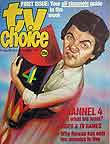 TV Choice was closed by legal action over listings copyright |
TV Choice (1982-83)November 1982 – January 1983. 25p Time Out still pressed ahead with a campaign to publish listings in the face of legal action from the BBC and ITV. A title with the same name was launched in Bauer in 1999. |
 First issue of Bauer's TV Choice listings magazine |
TV ChoiceBauer, August 1995-Launch at cheap end of the market (40p in 2003-04). Expanded listings market to become third-biggest seller. Bauer also publishes Total TV Guide and TV Quick. Its ABC sales figure for Jan -Jul 2009 was 1,335,894 copies a week, making it the top-selling TV listings guide. It held on to most of these sales, registering 1,200,487 in the middle of 2017 |
 First issue of IPC's pared-down TV listings weekly. Designed to fit on the arm of a chair |
TV EasyIPC tx, London. 7 April 2005-14. Launch issue: 30p (35p); 116pp. Ed in chief: Colin Tough; ed: Richard Clark; creative dir: Andy CowlesLaunch of A5-sized listings weekly after a sampling exercise brought the total to 8 titles in a sector selling about 5 million copies a week. This magazine is pared down to the listings with no added features. IPC aimed to segment the sector further:
Its ABC sales figure for Jan-Jul 2009 was 201,728 copies a week. When it closed, some features were taken on by What’s On TV, Time Inc's biggest TV title in the UK. |
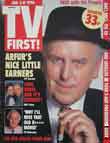 George Cole as 'Arthur Daley' in Minder was on the first issue cover of TV First!, the Sunday People's listings supplement. Cole made his name as 'Flash Harry' in the 1950s St Trinian's films – based on the drawings of Ronald Searle in Lilliput – and Daley was a reprisal of that character George Cole as 'Arthur Daley' in Minder was on the first issue cover of TV First!, the Sunday People's listings supplement. Cole made his name as 'Flash Harry' in the 1950s St Trinian's films – based on the drawings of Ronald Searle in Lilliput – and Daley was a reprisal of that character |
TV First!Mirror Group / Sunday People TV listings supplement. 2 January, 1993-With the Sunday People newspaper selling two million copies each Sunday, TV First! could immediately claim to be 'Britain's largest circulation TV listings magazine'. As well as Minder, TV hits at the time included Michael Gambon as Maigret, Harry Enfield, the return of (non-smoking) Irish comedian Dave Allen, A Touch of Frost and The Krypton Factor. The editor, of supplement and paper, was Bridget Rowe. Her introduction to the magazine stated: '... the programmes in your People TV guide are for the week starting NEXT Saturday to the following Friday – just like tomorrow's Radio Times (price 60p) or TV Times (55p), TVQuick (43p) or What's On TV (33p)'. TV First was printed by Hunterprint and BPCC and ran to 52 pages. The IFC advert was for a 25th anniversary model of Star Trek's Enterprise, the back was a 'Hush-a-Bye' painted plate by the Italian MaGo and the IBC more china in the form of a replica teapot collection. |
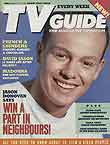 TV Guide was Rupert Murdoch's attempt to break into weekly TV listings in the UK as a European ruling forced Radio Times and TV Times to relinquish their monopoly on programme listings |
TV Guide [closed]25 March – December 1989. Murdoch Magazines, London. 40p; 60pp. Ed: Ian Birch A Jason Donovan cover – fronting a feature and a competition to win a part in Australian soap Neighbours – led the first issue. The title was given a £5m advertising budget and the target circulation was set at 350,000-400,000 copies. A 48-page sample title was stitched into the March 18 issue of News of the World's Sunday magazine to promote the launch. Rupert Murdoch's interest in the sector was based on a move in the US and the fact that the UK duopoly for TV listings held by Radio Times and TV Times was to be broken up. In 1988, News International had bought Triangle Publications, which owned TV Guide, the market leader in the US selling 17m copies a week (it was founded in 1952). The company decided to bring the concept to the UK, with managing director Liz Rees-Jones announcing in January 1989 that it intended to launch a title to take advantage of the breaking up of the listings monopoly. This was triggered by a European Commission ruling. Several other publishers, including Emap, were also planning launches – in fact 'a flood' of launches was expected in the sector. Media Week (6 January 1989) reported: 'The Commission's ruling relates to a complaint by Irish publishers Magill, which had tried to publish a weekly TV guide in competition with TV Times and Radio Times – which circulate widely in the Republic. The Commission has ruled that TV and Radio Times' tight rein on schedule information was contrary to Article 86 of the EC Treaty. This ruling will now have to be considered by the UK Government, which is bound by the Treaty.' However, when TV Guide launched it could only carry details of cable and satellite listings – the terrestrial pages were merely summaries of the week's 'essential viewing'. Murdoch had to wait for legislation to break the monopoly held by Radio Times and TV Times. In December, Murdoch raised the guaranteed circulation of TV Guide by 30,000 to 150,000 copies a week. It was selling 190,335 copies a week at the time. However, in the same month, the company signalled a U-turn by deciding to turn the title into a subscriptions-based monthly for satellite TV alone in March 1990 when the duopoly on terrestrial TV listings lifted. A tough economic climate, Rupert Murdoch's debts and the £50,000 charge by Independent Television Publications for its listings put paid to the ambitious plans. In fact, recession set in, interest rates rose and the debt from the US Triangle deal nearly sank Murdoch. He sold off most of his magazine assets in the US and the UK. See TV Choice |
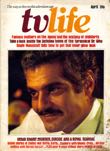 The ITV companies wanted to expand on TV Times with a lifestyle title, TV Life. Omar Sharif and Dr Who actor Jon Pertwee were the big features in this second issue |
TV Life [closed]March 1974-Jul/Aug 1975?. Independent Television Publications, London. 20p; 88pp TV Life was an attempt by Independent Television Publications, a jointly owned subsidiary of the ITV companies, to build on the success of their monopoly commercial TV listing magazine, TV Times. It was a women's lifestyle magazine with the selling line, 'The way to live in this television age'. It was monthly for the first year, but the Jul/Aug 1975 issue is the latest I have identified The second issue shown here leads on Omar Sharif in The Tamarind Seed. Other features includes an 'at home' profile of Dr Who actor Jon Pertwee, who was then appearing in the sci-fi series with Elizabeth Sladen. Hannah Gordon was the subject of a palm-reading piece and there were interviews with Gerald Harper as Hadleigh and Wendy Craig. There was also fiction based on a series called Zodiac. ITP also tried to launch a women's weekly, Chat, in 1985. In June 2016, the Daily Star Sunday newspaper renamed its TV listings supplement from TV Extra to TV Life. There is also a Japanese magazine with the same title. |
 Tommy Steele on the cover of TV Mirror (1957) |
TV Mirror [closed]Amalgamated Press, Fleetway House, Farringdon St, London EC4. Printed by Sun Printers, London and Watford. 4d. 28pp. Published every Wednesday. TV Mirror launched in late 1951 and took over Disc News in 1957. TV Mirror itself was taken over by Picture Show in 1959. Magazine format 12.5in by 10in (31cm x 25cm). |
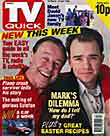 TV Quick March 1991 launch issue (10p) |
TV QuickBauer, March 1991-2010TV Quick tried to be a women's magazine, celebrity TV magazine and a listings magazine combined. Launched March 1991 (65p in 2003-04). Its ABC sales figure for Jan-Jul 2009 was 144,270 copies a week. Sales dropped to 113,936 in the first half of 2010 Bauer also publishes Total TV Guide and TV Choice, the sector best-seller |
 TV and Satellite Week listings magazine (31 October 2009) featured BBC's Spooks |
TV & Satellite WeekIPC Media TV & Satellite Week has a focus on terrestrial, satellite, cable and Freeview. Its ABC sales figure for Jan -Jul 2009 was 183,929 copies a week. Bauer profile |
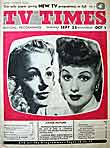 TV Times 22 September 1955 first issue cover with Patricia Dainton in mid-morning serial 'Sixpenny Corner' and Lucille Ball in 'I Love Lucy'
|
TV Times22 September 1955-The first issue of TV Times put Patricia Dainton in the mid-morning serial 'Sixpenny Corner' and Lucille Ball in 'I Love Lucy' on the cover. Note cut-out shaped like a TV screen. The cover was in black and white with spot red. For several years TV Times followed the prodeuction values of Radio Times and was printed letterpress on callendered newsprint and looked 'cheap and nasty'. However, by 1960 it was selling almost 4m copies a week so switched to gravure at Sun Printing in Watford. Radio Times was selling about 7m at the time. From this time, however, the circulation of both titles declined steadily. By 1966, the covers were in colour. At the start of 2010, the sales of TV Times were 311,307 a week. IPC profile |
UncutJune. IPC; £1.50 (special); 164 pages. Editor: Allan Jones www.uncut.net |
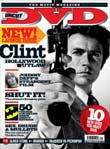 Clint Eastwood in his Dirty Harry persona complete with Magnum for the Uncut DVD launch issue cover |
Uncut DVDNov/Dec 2005-. IPC Media, London. Launch issue: £3.99; 148pp; Ed: Allan Jones; Pub dir: Andrew SumnerIPC Ignite launched a quarterly spin-off from Uncut, its film and music title, to cover films on DVD. The first issue features Clint Eastwood and has a history of The Sweeney. |
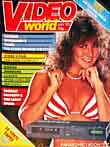 Pin-up models alongside video kit were a common element on Video World covers (Jan 1985) 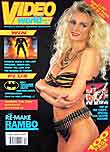 Video World (April 1990) Video World (April 1990)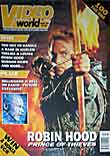 Still of Kevin Costner in Robin Hood Prince of Thieves for Video World cover (Jan 1992) |
Video WorldNorthern and Shell, London. MonthlyReviews of videos, VCRs and camcorders and pin-up style covers were the staple fare for Penthouse publisher Northern & Shell's Video World |
 Thunderbird 2 about to pick up a rescue pod on the cover of Videos of '86 |
Videos of '86Northern and Shell, London. Spin-off special from Video WorldSpecial issue of Video World for the Christmas market by Penthouse publisher Northern and Shell. As well as reviews – of videos, VCRs and camcorders – this special issue featured an interview with the creator of Thunderbirds, Captain Scarlet and Terrahawks, Gerry Anderson. |
 What's on TV in 21 July 2007 |
What's on TVTime Inc UK title selling 885,595 copies a week in the first half of 2017. This had dropped from 1,272,586 in 2009.Whatsontv.co.uk website later became https://www.whattowatch.com |




